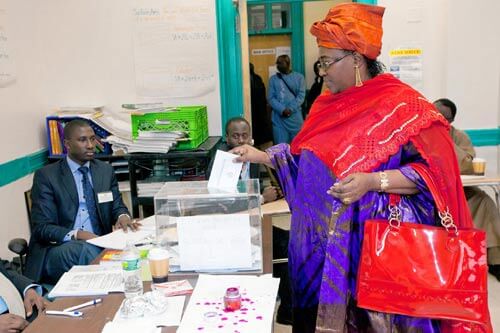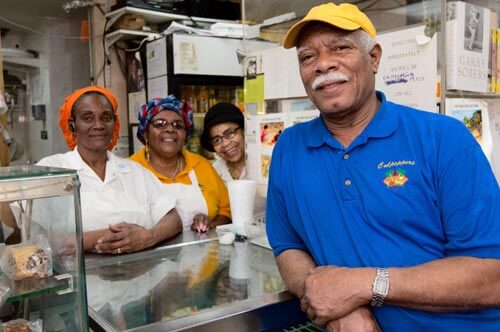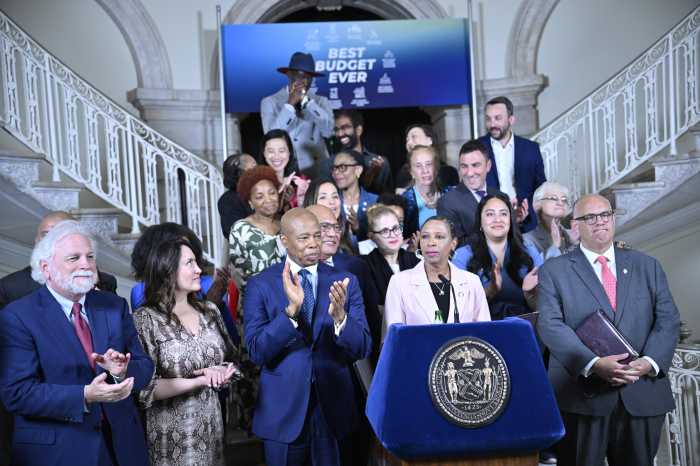A new five-borough taxi plan now under consideration by the city Taxi and Limousine Commission may change the way New Yorkers get around, but not in the way authorities intended. So say those closest to the issue, the drivers.
“The plan is fool’s gold” says cabbie, Bill Lindauer. “It looks terrible, when you examine it.”
Last Wednesday, 180 drivers who are members of the New York Taxi Workers Alliance, held a meeting at 1:00 a.m. [Since most drivers end their day at midnight] to express their disapproval of the TLC plan. The meeting ended at 4:00 a.m.
The Taxi and Limousine Commission is floating a plan will create a new class of cabs that are limited to street hails in the outer boroughs. The cabs will be uniform in color with a roof light, fare meter, and inspected and properly insured to ensure safety and fair fares.
But members of the coalition of taxi drivers and medallion owners say they stand to lose business, and want to be included in the discussion. Yesterday, Tuesday, a number of them were scheduled to meet with City Councilman James Bacca, who chairs the Transportation Committee to plead their case.
Bill Lindauer, of the group’s organizing committee said members have no problem with taxi stands at subway stops and shopping centers, but they were unanimously against the likelihoof of beong denied airport or Manhattan pick-ups.
According to a survey of medallion owners and drivers, there may be unwanted consequences. Street hires may be easier in the boroughs but it also may mean fewer yellow taxi drivers in Manhattan.
Waiting for a fare outside the Hilton in midtown last week was Beresford Simmons, a Jamaican immigrant who has been driving a cab for 38 years. He started with radio cabs, has owned medallion cabs with his two brothers and has put three of his four kids through college. Simmons opposes both the plan and the response from the large companies who lease cars to drivers. They are asking for 900 more medallions.
He thinks both will hurt independent owners.
“Some of the medallions should be set aside for the independents. Anyone paying 800-900 a week to a broker to drive their cabs can afford $2,000 a month to pay for a medallion.”
Regarding the plan itself Simmons thinks the boroughs will be better served by more taxi stands at hospitals and other points, like the ones in Flushing and on Queens boulevard.
“Its going to affect the industry if the mayor gets what he wants, prices of medallions will drop. I’m thinking of opening up a car service.”
Other drivers in the line agreed, including Malkit Baghiana.
“Why spend a half a million for a medallion?” he asked. “I will sell the medallion and buy a livery cab.”
Monte Smith, a doorman at the same hotel offers a different perspective. He has heard all the excuses from drivers when a guest needs to go to the outer boroughs, msuch as: “They don’t know how to get there. “The brakes aren’t working,” or “The meter is broken.”
Smith says he hasn’t had a problem getting drivers to go to New Jersey, since a surcharge was added; and he thinks the same solution would work for the boroughs,
Stafford McKain, a medallion owner, first started driving in 1982 and has been at it full-time since 1988. The soft-spoken Jamaican immigrant living in Brooklyn and his wife have raised three children. All have a college education. McKain says he keeps to himself mostly while driving; but recalls the long political discussion he had with Harry Belafonte as one of the more memorable fares.
He is still grappling with the 5 Borough Taxi Plan. On the one hand, he says: “I don’t see how they are going to keep them out of Manhattan. Even now we are fighting with the black cars (for street hails in Manhattan) The genie is out of the bottle. (They) might as well formalize it. There would have to be tight enforcement using a GPS and meters to record the fare.
On the other hand, he feels that prospective drivers may be thinking of using livery cabs because the price of the medallion is falling.
All of the drivers interviewed were immigrants, South Asian, Caribbean, and African.
John Cains wants to know why yellow cab drivers are being singled out. Cairns is angry and wonders aloud if there is a racial element. “All we are doing is trying to make a living at a hard and tough job.” He says he works 10-12 hours a day 6 or 7 days a week.


















